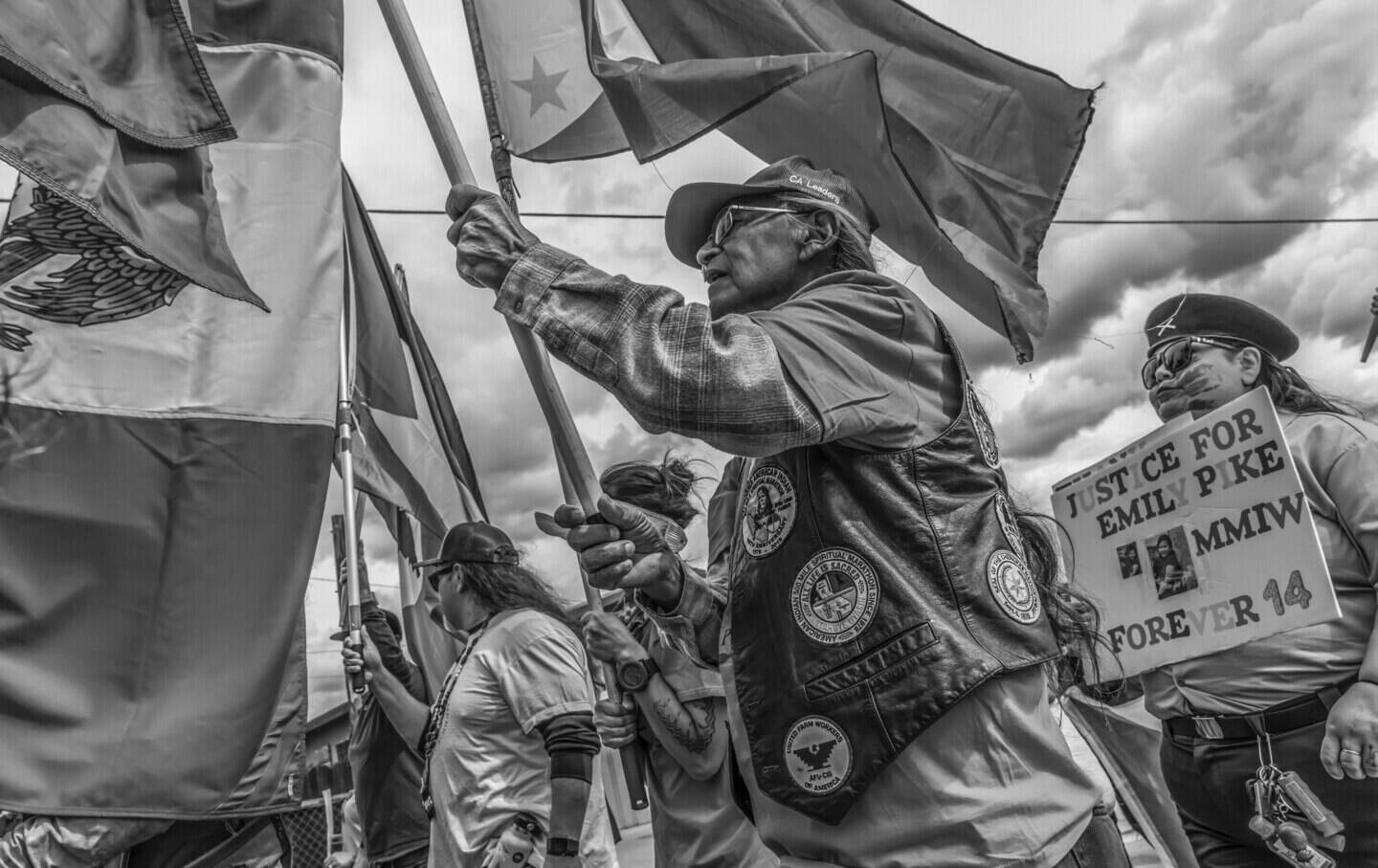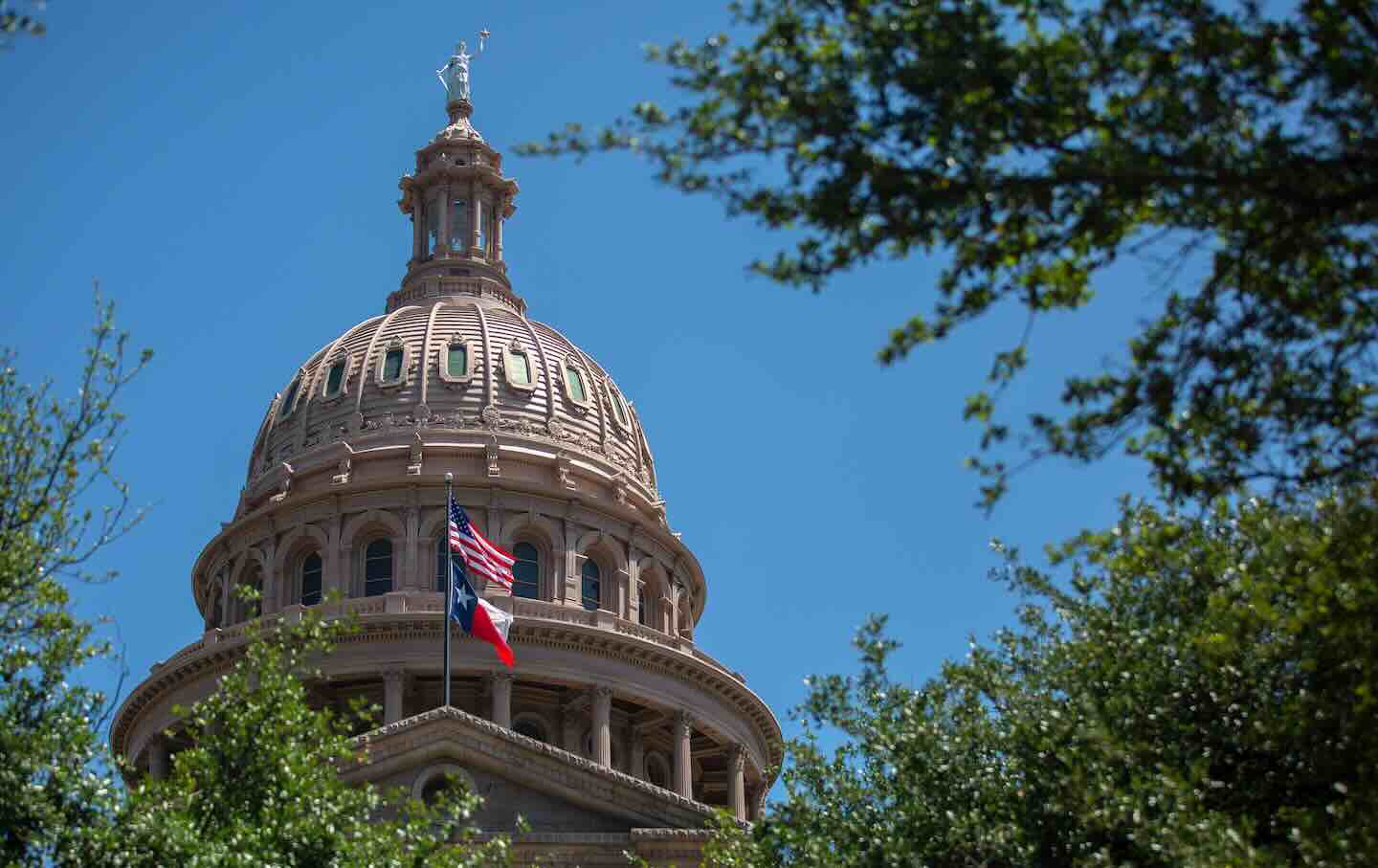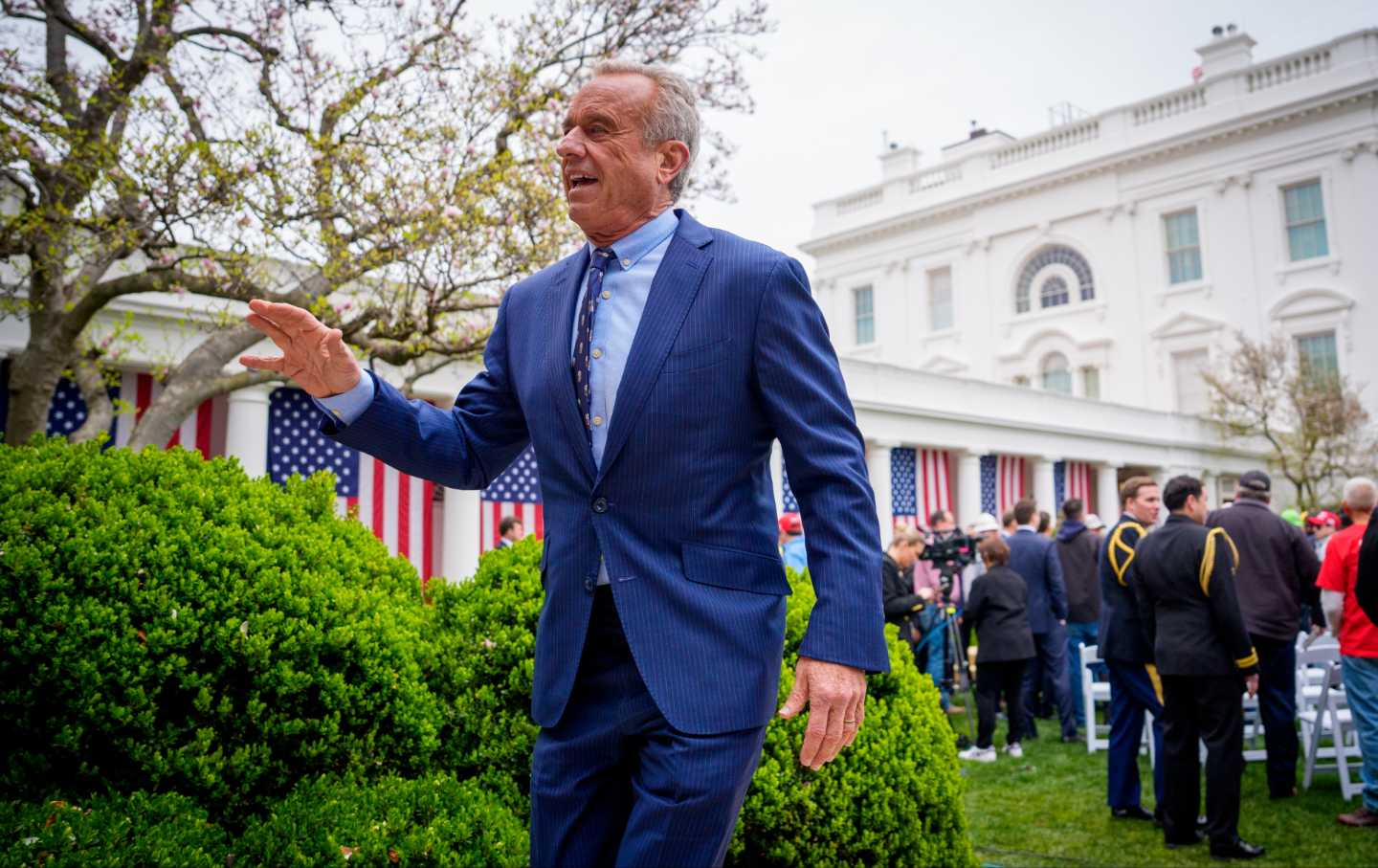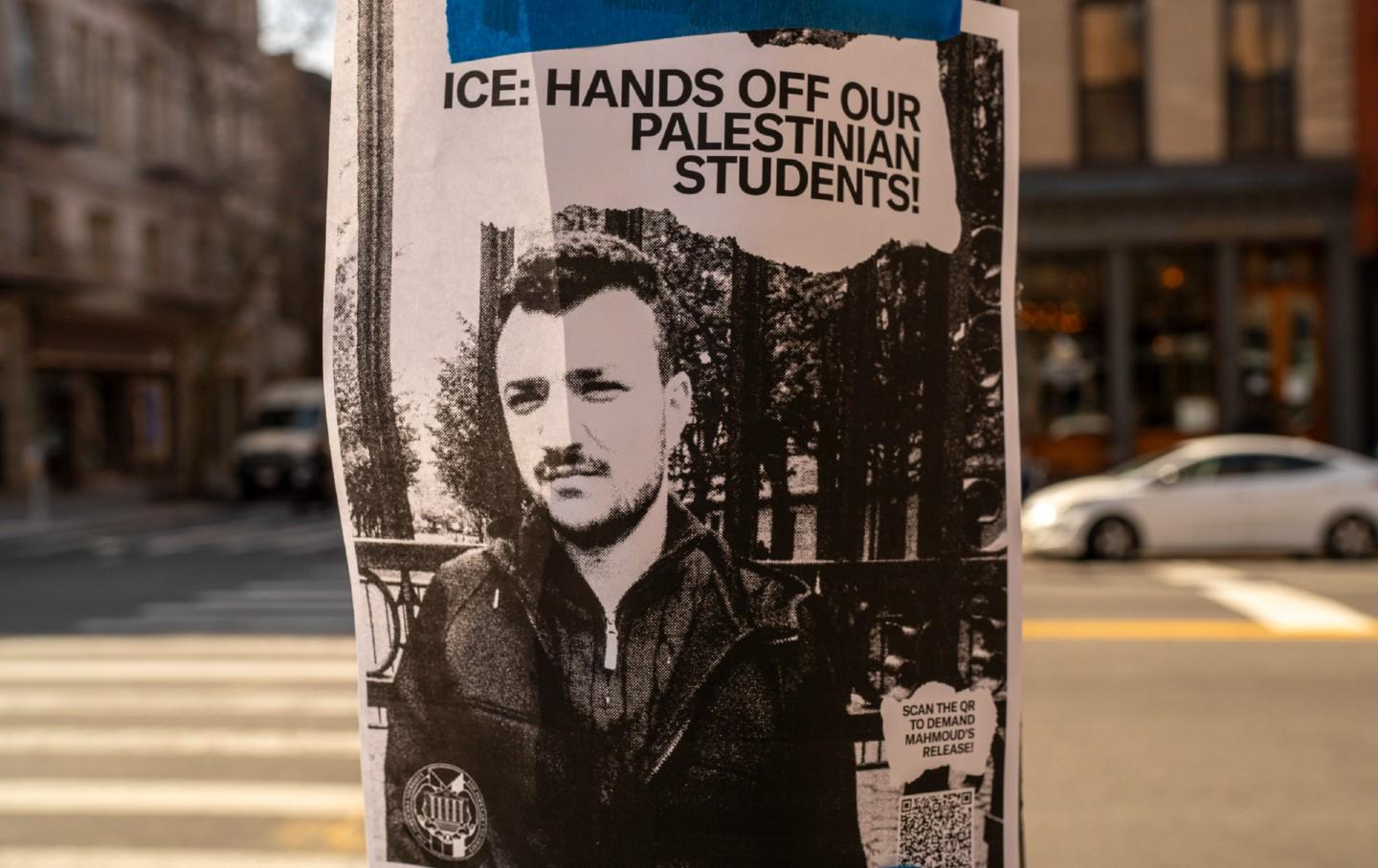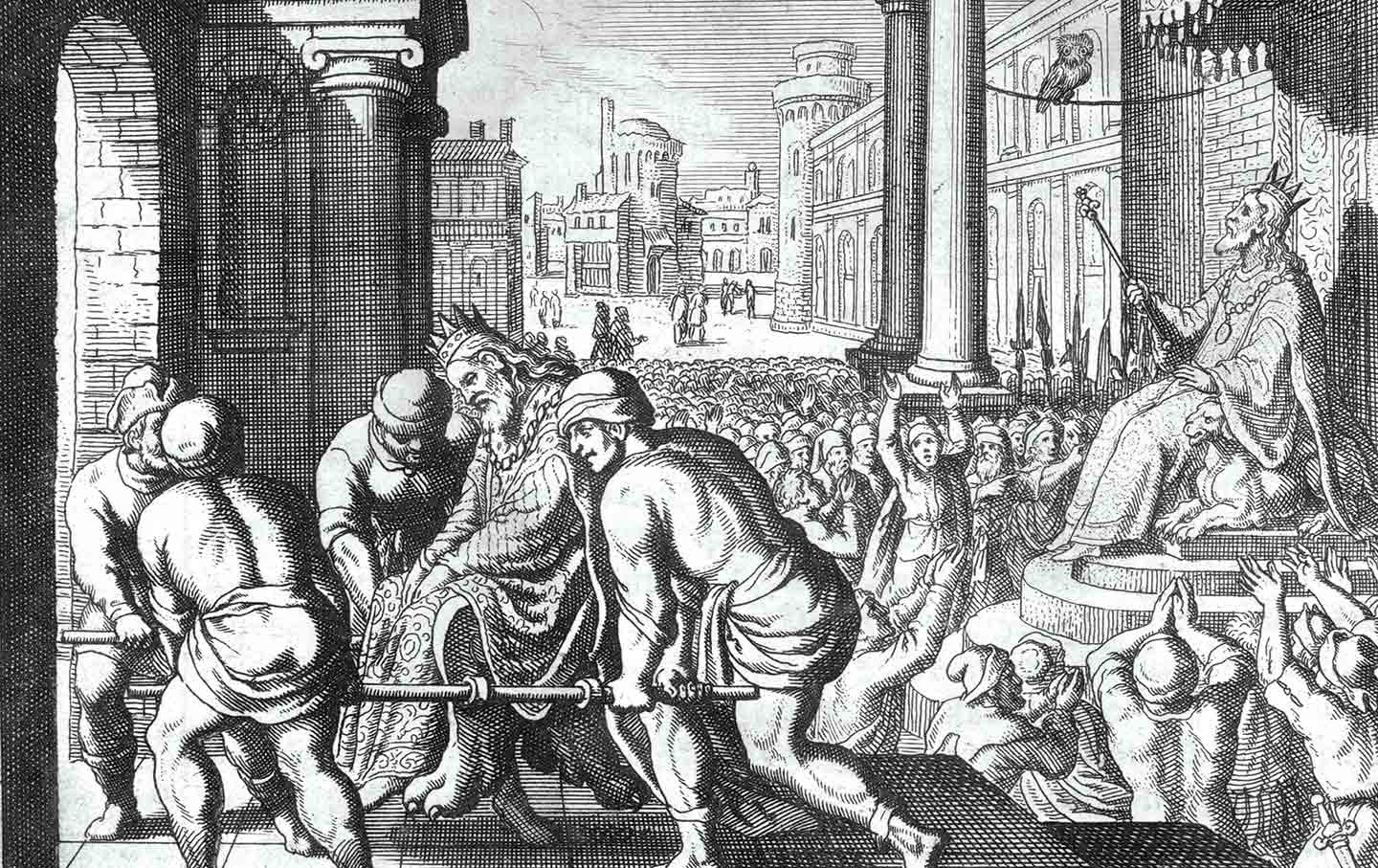What Student Journalists at Columbia Really Learned
In the classroom, professors taught the importance of the free press, at the same time as the administration stifled the work of student journalists and intimidated them through the NYPD.
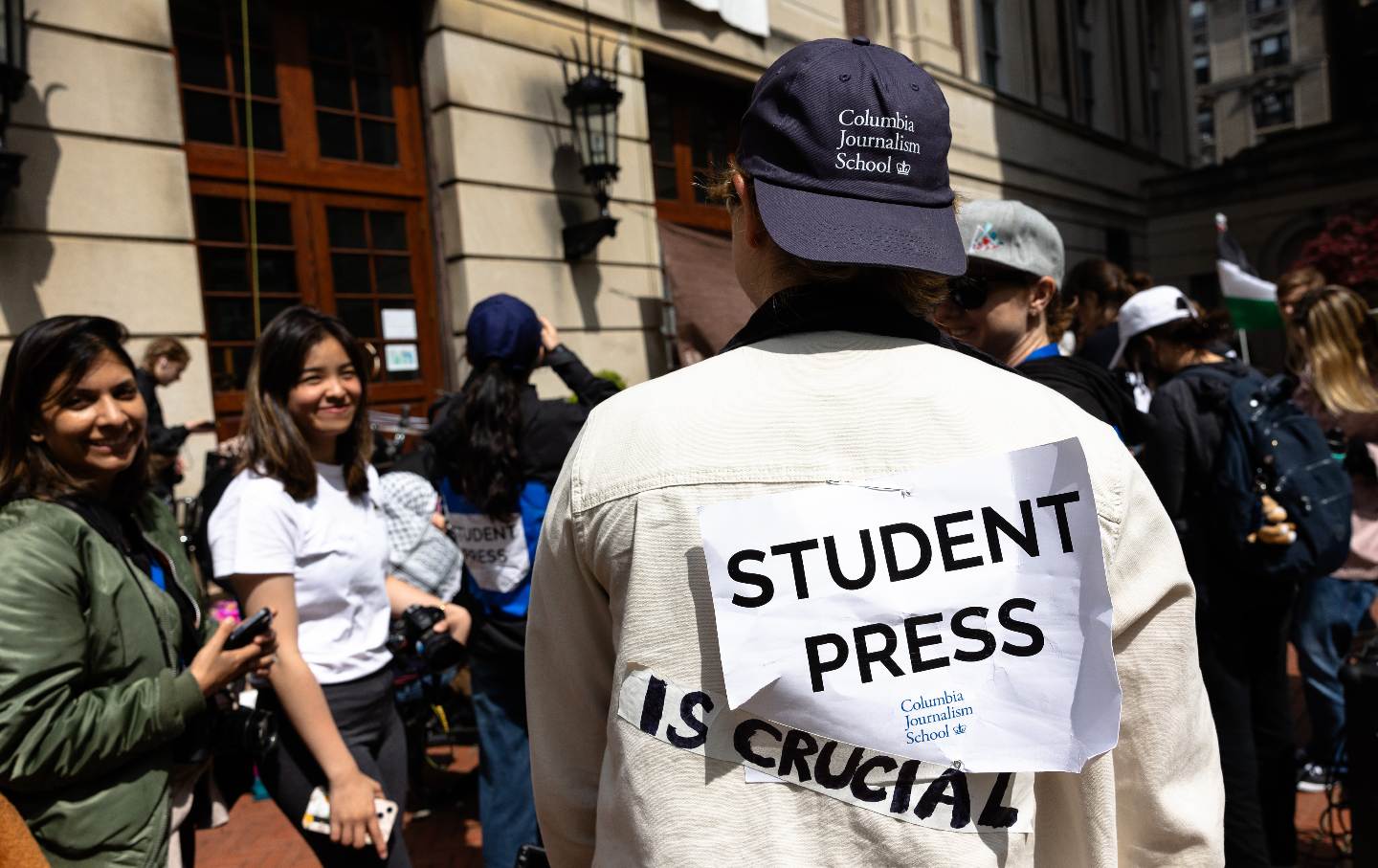
Over the past few weeks, student reporters at the Columbia Daily Spectator, WKCR, and elsewhere have been the main source of reliable information on Columbia University’s campus.
On April 17, the university became the center of international attention after pro-Palestine students established a Gaza Solidarity Encampment on the East Butler lawn. As the protests grew, much of the press was turned away. Mainstream reporting by nonstudents often focused on the protesters outside the campus gates and misrepresented students’ demands.
Still able to access their campus, student journalists continued to cover the protests, writing dispatches for local and national outlets along with their regular coursework. But during a militarized police raid on a student-occupied building on April 30, they were pushed off school grounds or into Pulitzer Hall—where one of the most prestigious awards in journalism is housed—and threatened with arrest if they left.
We spoke to six student journalists at Columbia to find out what they’ve learned this semester and how their coverage will change as they head into the summer. Their responses have been edited for length and clarity.
What have you seen during your reporting on the Columbia protests?
Anna Oakes: Inside the encampment, student protesters seemed committed to building a community from scratch. Every day, it seemed there were new spaces popping up among the carefully organized tents: a food distribution area, a library, first aid, trash collection, a sunscreen table, peer support, a writing corner, a laptop charging station, a “nut zone” for snacks, and a whole table with stacks of matzah for Passover. There were teach-ins on politics and Palestinian history, art sessions, Palestinian poetry readings, student worker walkouts, storytelling, and prayer sessions.
Claire Davenport: People began decorating their tents and personalizing them with protest messages and art. And every day, organizers put up a program board with that day’s agenda, including timing of visiting speakers, updates, and press briefings.
Emily Byrski: The camp formed a pseudo-society from the willpower and hard work of dozens and dozens of individual efforts, organizing itself in a seemingly organic but entirely structured way based upon the needs of the protesters.
Angelica Ang: The kindness by student protesters was extended even to us student journalists. On particularly hot days, I was reminded to “stay hydrated,” and was offered a bottle of water and electrolytes.
AO: But these periods of calm would be regularly interrupted by moments of intense mobilization, especially at night—when police action seemed imminent. Encampment organizers held trainings for protesters on what to expect in an arrest, and how to treat injuries and pepper spray. The encampment and occupation have now been dispersed, but the two weeks of protest, and their aftermath, have been such an all-consuming experience that it’s somewhat surreal looking back.
How have the university’s actions in the past few weeks restricted your ability to work as a journalist?
AA: The NYPD was omnipresent. It felt surreal stepping out of the 116th subway station and walking right into a squad of police officers. In the days following the second round of student arrests, our campus went into full lockdown and NYPD officers could be seen on patrol within Columbia’s premises.
Indy Scholtens: During the second week of the protests, Columbia started to shut down access for all students. Student journalists, including myself, who had been reporting on the encampment since the start were on a list. That was the only reason we could still access campus. But after the arrests on April 30, it got harder to get in.
EB: Columbia’s lockdown of campus, in all its various forms, sometimes changed from hour to hour. It made it confusing to figure out where and when we had access and it clearly limited the ability to work freely in trying to document the situation.
CD: Columbia started limiting access to campus buildings—including the journalism school itself—without much warning. One night, when police presence on campus was expected due to a negotiation deadline passing, we suddenly lost ID access to Pulitzer Hall. I stayed inside and propped the doors leading up to our makeshift newsroom on the fifth floor with trash cans so I could move easily through the building. I had to go to the lobby to let people in and out of the school when they needed to charge their batteries or wire some photos.
AO: On at least two nights, the administration shut off all building access within the campus, without warning. Our cards were disabled, and public security officers prevented people from entering the journalism building. I stepped outside for a few minutes, along with other student journalists, and couldn’t reenter for over an hour —even though all our equipment, and personal items, were still inside. From then on, we had a classmate stationed to let us back in when necessary.
CD: It felt as if we’d been fighting to maintain access to the school—negotiating with the cleaning staff and maintaining our own round-the-clock newsrooms complete with snacks, a Keurig, and sleeping bags. But none of us were allowed to stay and bear witness to the arrests of our fellow students on April 30, and it took hours and multiple negotiations to get back on campus to retrieve our possessions. By the time I got back in, it was almost midnight. I had been awake for almost 40 hours, my phone was on 5 percent, and I had a news spot to write.
AO: At one point, public security let in outside press, but not student journalists—even those with outside press passes. The night of the raid, police prevented me and a group of journalists from approaching the occupied building. We were kept about 100 feet away from the entrance, around the corner of the building, so we couldn’t see clearly who was being arrested, or how they were treated.
Fahima Degia: I was born in India but raised in New York. I always go back and notice how hard it is to be a Muslim Indian woman and a journalist there. I thought America was different because of the constitutional values of freedom of speech. It was difficult to see the police treat me and my fellow colleagues on the night of the protests with aggression.
CD: The minute the police arrived at Hamilton Hall, they began clearing us away. We were given clear instructions by our professors to follow police orders and avoid getting arrested, so we obeyed, walking backwards.
AA: When we witnessed an NYPD van pull up to the entrance of Columbia University, I pulled up my camera to take a picture. An NYPD officer, who had been trying to push a few other journalists and I to cross the road, physically stepped in front of my camera and in the way of my shot.
IS: When the police got into campus, I was standing right in front of them—in front of the gates at East 114th and Broadway. I was a bit overwhelmed by the amount of police that kept coming towards me, as I walked backwards, shooting pictures of them. I eventually went to stand on the sundial, which is in the middle of campus, to capture them clearing the encampment.
At one point I had to choose between knowing I could go back to Pulitzer and the professors, or stay outside. As an international student, I can’t get arrested—it would possibly mean losing my visa. I went in anyway.
CD: It wasn’t until I was getting pushed out of the school gates that I realized we were going to completely lose access to campus and any possibility of witnessing the clearing of Hamilton Hall, even from a distance.
As we were pushed away, there were 25 protesters in front of Hamilton Hall standing with their arms linked, singing. They looked young, and I wondered what was going to happen to them with no one watching.
Popular
“swipe left below to view more authors”Swipe →The days after, I kept coming back to that image. I’ve never reported on the police before, and I had never felt so close to the possibility of violence. It was chilling. I felt numb and alert the rest of that night as we fought to get back on campus, but when I finally spoke to my parents that evening, I surprised myself by bursting into tears in the Journalism School stairwell.
Were you threatened with arrest?
IS: Inside the Journalism School, we were told that we couldn’t go outside or we would be arrested. That was strange to me: I was wondering, what legal grounds are there to hold student journalists inside a building? I still don’t understand the legal basis on which police could remove all [student] press.
AO: That night in particular, it didn’t seem to matter that I was a journalist. The police either treated me like a student, or someone who didn’t belong on campus at all.
EB: In several cases, I was treated as a protester and yelled at or ushered back. But upon verifying I was press, I was met with a resigned acceptance and told, essentially, to stay out of the way.
FD: I told the police I was a journalist, but I kept being yelled at and pushed. It did not change their attitude towards me. The entire time, I was worried that I was ruining job prospects—even if I showed up as a nuanced unbiased journalist.
How have the school’s policies differed from what you’ve learned in class about the role of the press?
FD: The school teaches us how being a journalist grants us access, but you see in certain situations that this comes with limits.
CD: In class, we’ve learned about the rights of a fair and free press enshrined in the First Amendment, and the right of the press to bear witness without obstruction or intimidation. While we can’t interfere with the performance of official duties or arrest and we have to obey the same laws as the general public, completely removing the press that was in no way interfering with police activity seems to go against the very spirit of our constitution. And it certainly feels at odds with an institution geared towards learning and the free expression and exchange of ideas.
AA: We talk about the role of the press in upholding democracy, and in serving as a valuable check and balance to systems and institutions of power. However, by allowing the NYPD to enter campus grounds and remove student journalists during the Hamilton Hall arrests, a layer of opacity was introduced in the reporting of events.
But our deans and faculty have been immensely supportive: staying overnight in the Journalism School alongside student journalists, coordinating donations from CJS alumni, and blessing us with pots of hot coffee, energy bars, and sleeping bags. They guided us through the process of pitching our journalistic work to external newsrooms, photo agencies, and press outlets, and how to negotiate fair freelance contracts.
IS: We wrote down phone numbers of professors and lawyers on our arms when we would go out reporting. We received safety training on how to deal with police and tips on how to report on protests. During and after we had covered the encampment, professor Bruce Shapiro of the Dart Center for Journalism and Trauma held several sessions to talk about how to take care of yourself physically and mentally while covering the protests.
EB: Most of my professors have been truly awe-inspiring, and I feel so lucky to have had their support the last few weeks. Both of my current professors, Marguerite Holloway and Helen Benedict, were outspoken in their defense of student journalists. I also connected with many professors and deans at the JSchool whose classes I did not take, such as the incredible Azmat Khan, and I felt a protective presence emerge around the journalism school, especially the night of the NYPD’s raid on Hamilton Hall.
CD: My radio class covered the protests in our show’s weekly broadcast. One of my professors let me sleep on the couch in her office and reposted my coverage on her LinkedIn. Other professors made space to talk about the protests in class and were understanding about how our reporting might impact our other schoolwork.
What advantages or disadvantages did the student press have over traditional media when covering the protests?
CD: Access was definitely one of the biggest advantages. The protests were happening on the lawn right outside our building, and we received administrative e-mail updates on our Lionmail accounts. We also became a giant team reporting on this, sharing updates in our WhatsApp group chat. We were a lot more clued-in than outside media.
Protesters also seemed more willing to talk to student journalists than outside press, and we were able to access the encampment and conduct interviews at quieter hours in the evening when other reporters might go home.
EB: We’ve spoken at length in our classes about the concept of “parachute journalism,” and had an up-close look at it occurring on our own campus. Students have been covering the protests for months; many took the time and care to intimately understand the people involved, on every side of the issue; and many have very personal stakes in the protests. The media frenzy that we saw, the slew of clipped and out-of-context information, and the rushed attitude of many in the nonstudent media, were disheartening to see so blatantly.
IS: The Spectator, WKRC, and the students of the Columbia Journalism School were on campus day and night. We spent hours and hours building relationships and trust, and we knew what the protesters were asking for, and what they were risking individually.
But the “traditional media” and student press do not have to be separate things: The student press of the Spectator and WKRC already had a home for their stories, but the students of the Columbia Journalism School sometimes did not. Many students pitched stories for outside outlets, or were stringing for others. I think the past few weeks have shown that you can rely on student press.
CD: But many of us also struggled with a lack of confidence and experience. It made this a wonderful learning moment, but certainly added to the pressure. Many of us are new to the field and wanted to make sure to get the story right—maintaining objectivity without losing our unique perspective on the encampments, for instance. Many of us were also not savvy with how best to manage the influx of press requests we were getting from outside media, which also became exhausting.
EB: It was very difficult at times to be taken seriously by major outlets, let alone to be compensated fairly for work. I am lucky, in a sense, to have worked freelance for many years, so I know how to pitch and negotiate as necessary. But it didn’t make it any less frustrating to be labeled a “student journalist” with a sense of dismissal.
IS: Not every media outlet takes student press seriously as reporters. Many of the students at the Journalism School have been published before. My classmates and I received many requests for interviews or our footage—especially after the police raid—but few outlets wanted to pay for it, or only wanted to interview us about our feelings.
What has most media coverage missed?
AO: Media coverage generally seems to have portrayed the protesters as rampantly antisemitic, belligerent, and spoiled. From interviews with dozens of protesters over the weeks, however, it was clear that many students had a lot at stake, from immigration status to their ability to graduate to their relationships with family. Jewish protesters said they felt safe and welcome in the encampment, and spoke of their protest as stemming from the core tenets of their faith.
EB: It’s one thing to know intellectually that the news over-hypes negative events and undercovers positive ones, but seeing it up close and being a part of the media frenzy was very frustrating.
CD: Coverage has gotten far away from the protesters’ actual demands—university divestment from companies with business ties to Israel, transparency around university finances, and amnesty for protesters.
AO: I also haven’t seen an in-depth investigation of universities’ investments in Israel, or the financial ties by university trustees.
As we head into the summer, how will your coverage continue?
AA: I hope to continue covering the events at Columbia as they continue to unfold over the summer. Will student protesters continue to advocate? Will Columbia’s management budge, and maybe inch closer to divestment?
AO: I’d like to step back and think about what these protests mean in a larger US and political context. It will be interesting to see how the nationwide student protests affect the start of the next school year.
EB: I have broadly focused my coverage on climate issues, though I am relatively new to formal journalism and still figuring out what I want to do. I have seen a lot of connected threads between the current protest movement and the climate movement, and will continue to pursue stories in the vein of climate and social justice.
IS: I’m graduating in a few days, and I will take this experience with me. During my year at Columbia, I’ve followed previously incarcerated individuals during their reentry process in New Jersey, and I’ve traveled to Ireland and Northern Ireland to report on the role of religion in both conflict and resolution—focusing on the Troubles but also Gaza. Nevertheless, the experiences on campus in the past few weeks taught me a lot about journalism. It became even more evident how talented, empathetic and dedicated my cohort is. If this is the future of journalism, I’m glad to be a part of it.

